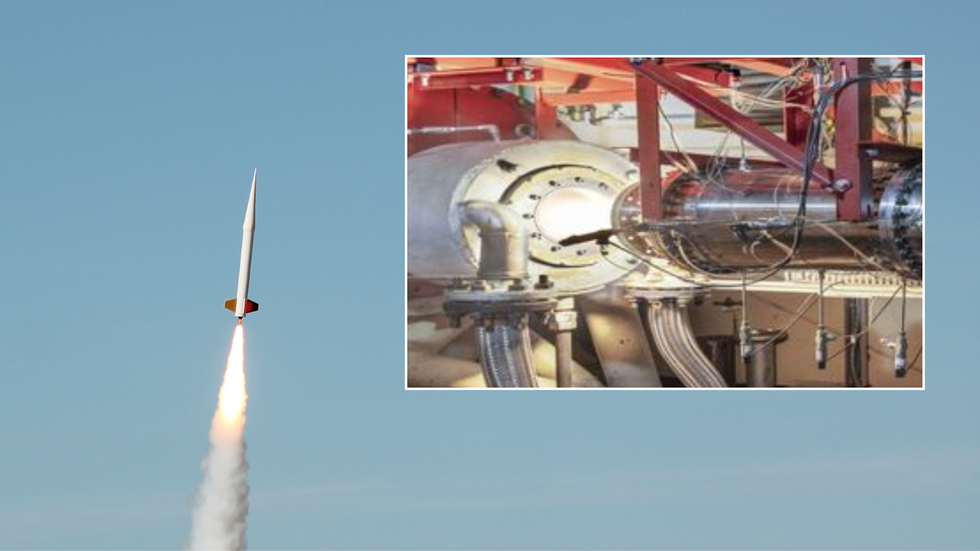‘Putin will rearm, regroup, and do this all again,' warns Former Chair of Defence Select Committee
GB News
These advanced missiles will cover greater ranges than conventional rockets
Don't Miss
Most Read
Trending on GB News
The UK has completed a successful test of a new engine for hypersonic missiles, in a pivotal leap forward for European defence.
The latest UK hypersonic research could see weapons travelling at several thousand miles per hour.
This development represents a landmark moment after it was established that the new engine would power a cutting-edge hypersonic cruise missile.
These advanced missiles will cover greater ranges than conventional rockets.

These advanced missiles will cover greater ranges than conventional rockets
Getty/UK Gov
The engine uses air-breathing technology, which utilises air for combustion rather than requiring a separate onboard oxygen device.
This innovation is set to greatly advance the UK's hypersonic weapon capabilities.
The Ministry of Defence has stated that the research will provide a "transformational capability" that delivers operational advantage for the future UK armed forces.
The testing was part of a joint team led by the Defence Science and Technology Laboratory (Dstl) and the US Air Force Research Laboratory.
A total of 233 successful static test runs were conducted at the Nasa Langley Research Centre in Virginia, USA.
LATEST DEVELOPMENTS:

The Ministry of Defence has stated that the research will provide a 'transformational capability' that delivers operational advantage for the future UK armed forces
PAThe testing programme ran over six weeks and involved real-time data analysis to refine design aspects and boost propulsive performance.
UK SME Gas Dynamics Ltd was among the industry partners supporting the project.
Defence Secretary John Healey said: "We are living in a more dangerous world and it has never been more important for us to innovate and stay ahead of our adversaries, equipping our forces with the technologies of the future."
He emphasised that this milestone in hypersonics research demonstrates another crucial area of close collaboration with the United States.
The research is supported by British scientists and British small businesses.
Dstl's chief executive, Paul Hollinshead, described the milestone as a "critical advancement" in the UK's defence.
He added that it "reinforces our standing in the Aukus hypersonic weapon development collaboration".

Britain's Defence Secretary John Healey, Australia's Defense Minister Richard Marles and former US Defence Secretary Lloyd Austin in London
GETTY"The success of these tests highlights the UK's commitment to technological leadership and innovation in this crucial area," Hollinshead said.
This achievement strengthens Britain's position in developing cutting-edge defence technologies alongside international partners.
The research aims to support delivery of a hypersonic weapon technology demonstrator by 2030 through the Ministry of Defence's Team Hypersonics (UK) programme.
At the end of last year, the UK, US and Australia reached a deal to accelerate the delivery of "battle-winning" hypersonic missiles.
Under the second pillar of the Aukus submarine pact, the three nations will develop, build and test projectiles that travel five-times faster than the speed of sound.
The countries are pooling expertise and resources to ensure timely delivery.








